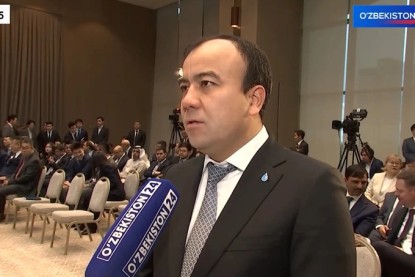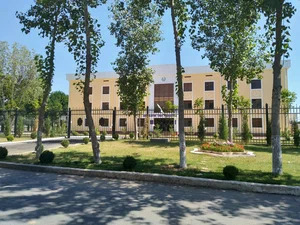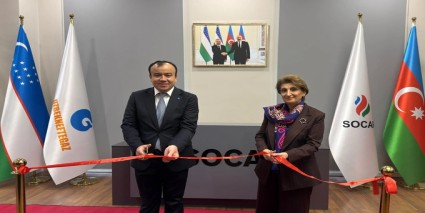The consumer confidence index of Uzbek citizens in October shows growth for the third month in a row. It increased by three indicators and amounted to 134.4 points, thereby indicating a high level of positivity among the population.
This time, absolutely all components of the index increased, but the greatest growth was observed in the issue of assessments of a personal financial situation, the sub-index of which increased by five points at once. The issues regarding the expectations of Uzbek citizens, in general, also continue to break records, approximately 80% of the answers were positive. Moreover, the difference in consumer confidence between rural and urban populations has narrowed significantly. The rural residents show consumer confidence only 0.3 points higher than the urban residents.
The residents' personal situation continues to improve
The sub-index of changes in a personal financial situation reached 134.1 points. If in September the share of those who noted improvement in this component was 57.5%, then in October the figure increased to 61.9%. Traditionally, young people continue to be the most positive on this issue, although the difference with the older generation has somewhat narrowed. 68% of young people reported the improvement in their personal financial situation over the past year, while among the older generation this figure was only 47%.
Regionally, one can notice a change of the leaders. Instead of the Andijan and Bukhara regions, the Fergana region became the sole leader in October, where 74% of residents say their financial situation has improved. The region where people see the least improvement is Tashkent. The share of such respondents there is 49%.
The income level of the Uzbek citizens continues to show the expected result both in this matter and in consumer confidence in general. Among the richest, 85% of people note the improvement in their personal financial situation over the past year, while among the poorest only 29% report this.
The remaining four sub-indices increased by 2.3–3.7 points, but the positive expectations of the Uzbek citizens increased noticeably. The expectations have improved both for the personal financial situation and for the economic situation in the country, over the next 12 months. In September, 70.9% of residents expected the improvement in their personal financial situation, and in October the share of such people increased to 73.8%.
Age groups again showed the aforementioned correlation, but the difference was even smaller. A positive response was given by 69% of the oldest generation, and among young people the share of positive reviews was 78%. Regionally, the Fergana region remains the leader for the second month in a row, where 84% of residents expect the improvement in their financial situation. The last month's outsider, the Republic of Karakalpakstan, this time, showed the improvement in the share of positive responses, from 65 to 69%. In October, Tashkent took last place, the indicator, there, reached 66%, which is 0.8 pp above the September level.
Growing economic prospects
As for expectations of the economic situation, a year later the share of positive responses in October increased noticeably, from 67 to 70%. For several months in a row, the correlation between positivity and an age has been breaking down in this matter, since young people, on the contrary, turn out to be less positive, although the difference is not as significant as in the matter of the personal financial situation. Among young people, the share of positive responses reached 68%, while among the older generation it is at 71%.
Once again, the first and last places were taken by the Fergana region and Tashkent. Moreover, in September, the leader and the outsider were the same. Over the month, the share of optimists in the Fergana region, regarding the economy increased from 73 to 78%. In Tashkent, on the contrary, the share of such people decreased from 61 to 57%.
The difference in optimism between the richest and the poorest increased slightly compared to September, from 13 to 22 pp. 56% of the poorest expect the improvement in the economy of Uzbekistan, and among the richest there are 78%.
Slight decline in inflation sentiment
The Uzbekistani inflation assessments dropped slightly in October after a sharp increase in September. If then 40.1% of respondents noted a very strong increase in prices, then in October the share of such fell to 33.2%. However, this is still noticeably higher than the July-August result of 24-25%. Officially, monthly inflation slowed in October from 1.24 to 1%, and the annual inflation fell from 9.2 to 9%. This correlates with the residents' responses, according to the Freedom Finance Global survey. The share of those who believe that prices have been growing faster over the past year than before has also decreased slightly, from 50.6 to 49.8%.
Among individual food products, for the second month in a row, the leaders remain meat, poultry and flour, a strong increase in prices for which was felt by slightly more than half of the Uzbek citizens. But official statistics show slight slowdown in growth of meat prices and even a decrease in the cost of flour. If in September the price for this product increased by 15.7% for month, then in October it decreased by 1.6% for month. Assuming that the decline was not so significant that the population could forget the September price increase. The cost of beef increased by 1.1% m/m, and for lamb – by 0.9% m/m, which was slightly lower than last year’s October result.
At the same time, inflation expectations remained virtually unchanged. If the share of those expecting a very strong rise in prices in a month increased from 18.7 to 19.6%, then the same indicator, but over the course of one year, decreased from 27.7 to 27.2%. Thus, some cooling of inflation has not yet caused the population to lower their expectations. It will be interesting to see what the figures turn out to be, if the inflation continues to slow in the coming months.
Regionally, the majority of people expecting a strong rise in prices live in the Tashkent and Jizzakh regions, where the share of the Uzbek citizens with such views amounted to almost 26%. The smallest number of “inflation pessimists” live in the Fergana region (14.6%), which quite correlates with strong consumer confidence in the region.
Devaluation expectations have decreased
In October, devaluation expectations of the Uzbek citizens decreased slightly. In terms of weakening of Som against USD during the year, one can see record low figures. 60.8% of residents expect the national currency to weaken, which is noticeably lower than the September figure of 63.3%. A possible factor was the second stable month in a row for Som, as well as a general improvement in consumer confidence and lower inflation. Let us note that this time the reduction in pessimists was largely due to the increase in those who expect USD to maintain the exchange rate, and not those who found it difficult to answer this question. On the other hand, the figure of 60.8% is still very high, especially in comparison with other Central Asian countries.
The share of those expecting Som to weaken within the month decreased slightly, from 49.1 to 48.7%. Credit confidence continues to grow steadily from month to month. The number of those who note that now is a good time for loans increased from 31.2% in July to 33.8% in October.
The deposit index also has the highest value in four months of research – 58.5 points. 41.3% of the Uzbek citizens believe that now is a good time to open deposits. The Confidence Index continues to increase along with overall consumer confidence. But at the same time, the share of those expecting unemployment to rise during the year increased from 40.9% in September to 44.2% in October.














